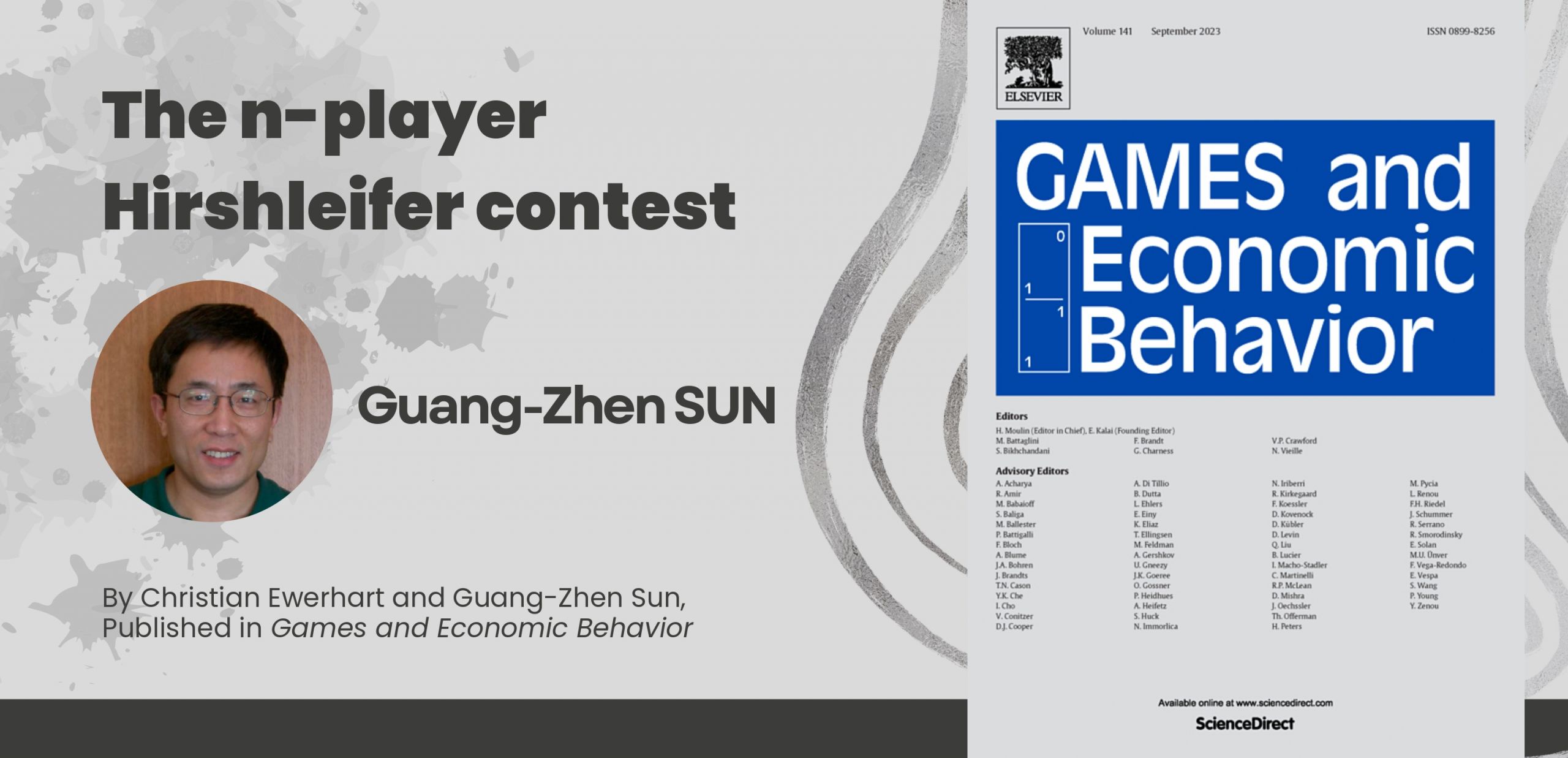
The n-player Hirshleifer contest
By Christian Ewerhart and Guang-Zhen Sun
Published in Games and Economic Behavior
Abstract:
While the game-theoretic analysis of conflict is often based on the assumption of multiplicative noise, additive noise such as considered by Hirshleifer (1989) may be equally plausible depending on the application. In this paper, we examine the equilibrium set of the n-player difference-form contest with heterogeneous valuations. For high and intermediate levels of noise, the equilibrium is in pure strategies, with at most one player being active. For small levels of noise, however, we find a variety of equilibria in which some but not necessarily all players randomize. In the case of homogeneous valuations, we obtain a partial uniqueness result for symmetric equilibria. As the contest becomes increasingly decisive, at least two contestants bid up to the valuation of the second-ranked contestant, while any others ultimately drop out. Thus, in the limit, equilibria of the Hirshleifer contest share important properties of equilibria of the corresponding all-pay auction.
